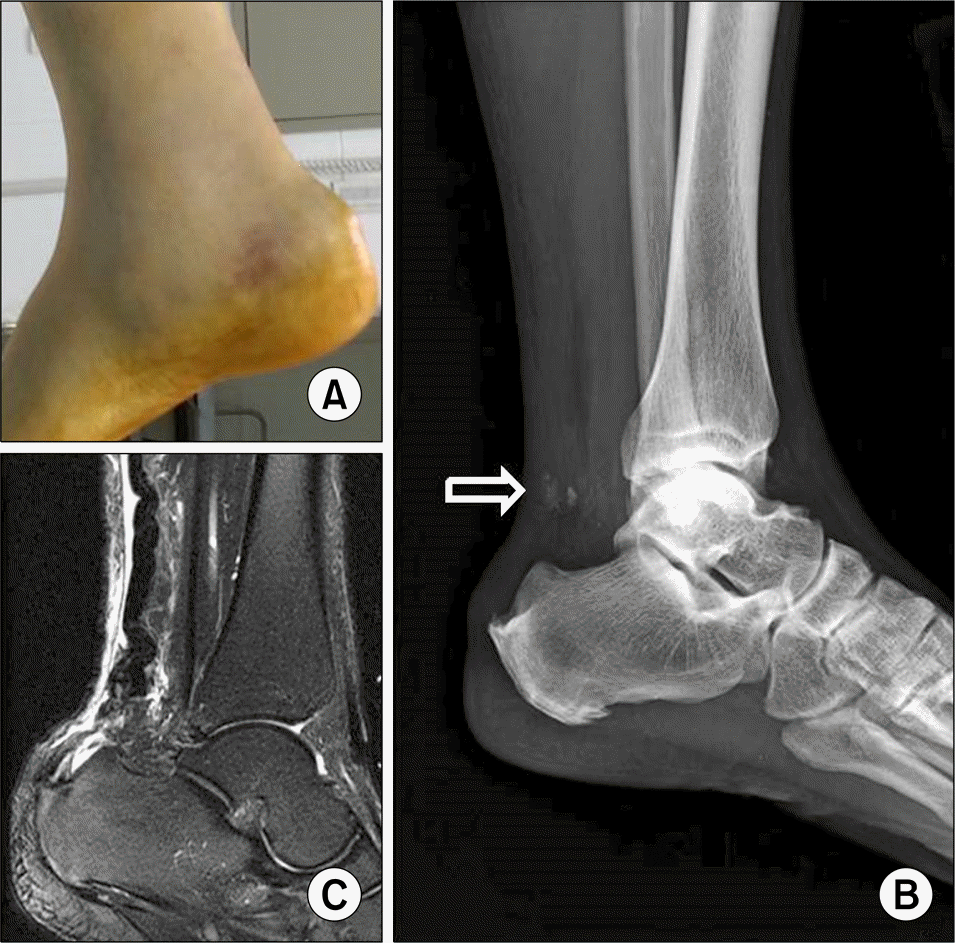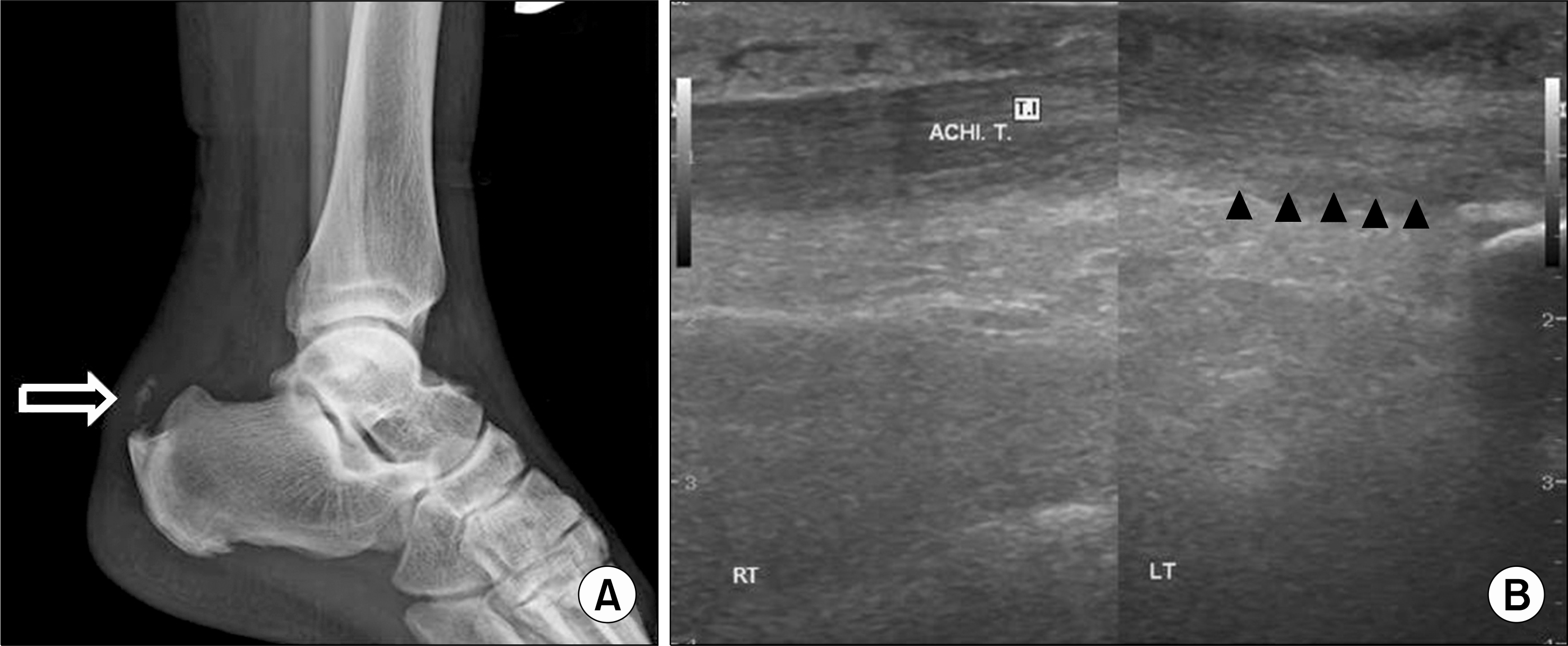Figure 2.
(A) The clinical photo shows swelling, ecchymosis and dimpling in the posterior aspect of the ankle. (B) Simple lateral ankle image shows loss of Kager's triangle and bony fragments (arrow). (C) Sagittal T2 magnetic resonance image shows rupture of the Achilles tendon at calcaneal insertion site and enthesopathic spur.





 PDF
PDF ePub
ePub Citation
Citation Print
Print





 XML Download
XML Download